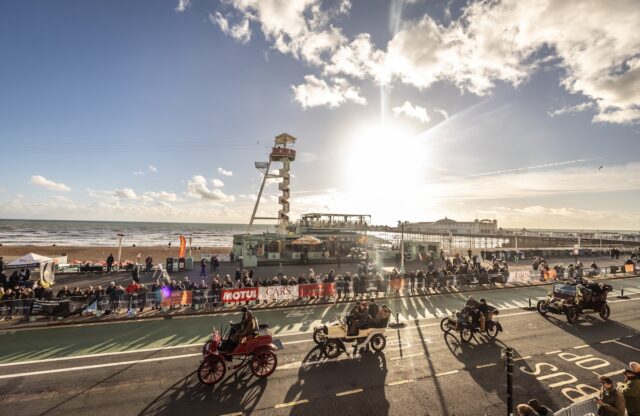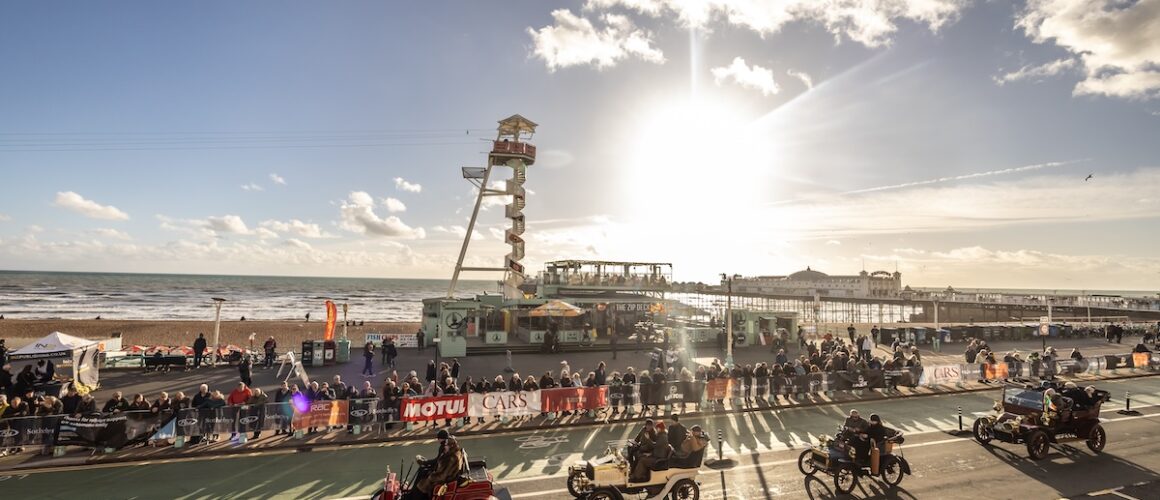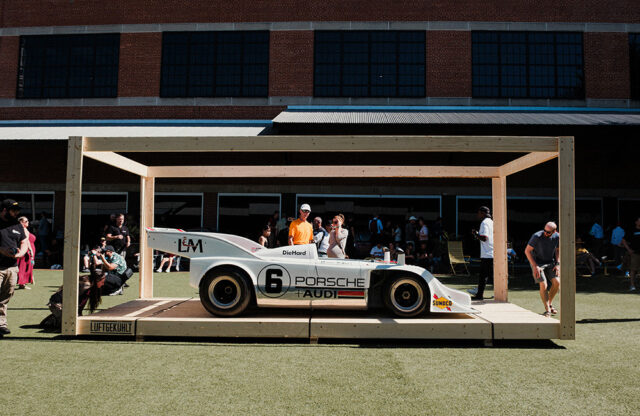The organisers of the annual RM Sotheby’s London to Brighton Veteran Car Run claim that it is the largest and most remarkable gathering of veteran vehicles on the planet. And do you know what? They’re absolutely right.
This year, on November 2, 2025, 384 veteran cars and their intrepid drivers and passengers gathered before sunrise in London’s Hyde Park, excited despite the early rain. The weather hadn’t discouraged the crowds of well-wishers either, all waiting for sunrise to signal the start of the Run – the world’s longest-running motoring event.
You’ll almost certainly know that the Run marks the anniversary of the original Emancipation Run of 1896, which celebrated the passing of the Locomotives on Highways Act. That landmark legislation raised the speed limit for ‘light locomotives’ from 4mph to 14mph, and abolished the requirement for a man to walk ahead waving a red flag – hence the symbolic tearing up of a red flag at the start of each Run.
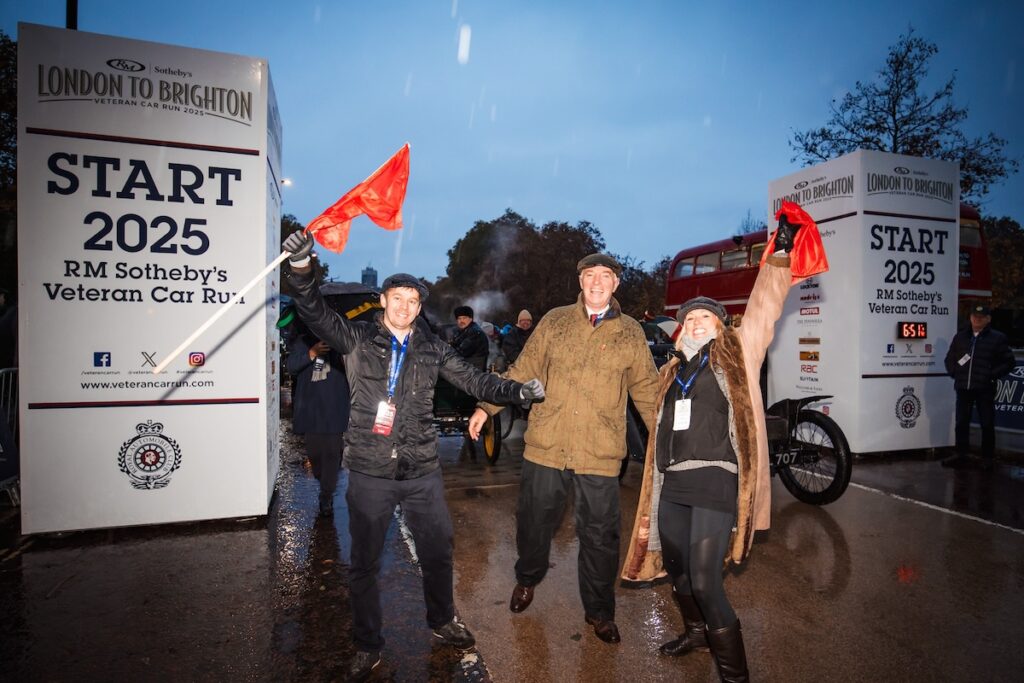
This year, the red flag was torn up by racing driver and broadcaster Alex Brundle and presenter Charlotte Vowden, who had the privilege of leading the field away from Hyde Park driving the British Motor Museum’s 1899 Wolseley 3.5hp Voiturette. Crucially, this car, affectionately known as OWL (after its registration plate), is the only working survivor from the original, game-changing 1000 Mile Trial in 1900 – and 2025 marks the 125th anniversary of that daring 22-day journey, which introduced the motor car to communities across the nation.
With red flag torn up and dawn breaking, the Run’s curtain-raiser saw a group of pre-1905 motor and pedal cycles – even penny-farthing riders – bravely leaving Hyde Park, bound for Brighton. Then, at 7:00am, the first batch of pre-1905 ‘horseless carriages’ was flagged away by Duncan Wiltshire, chairman of the Royal Automobile Club, which has looked after the Run since 1930.
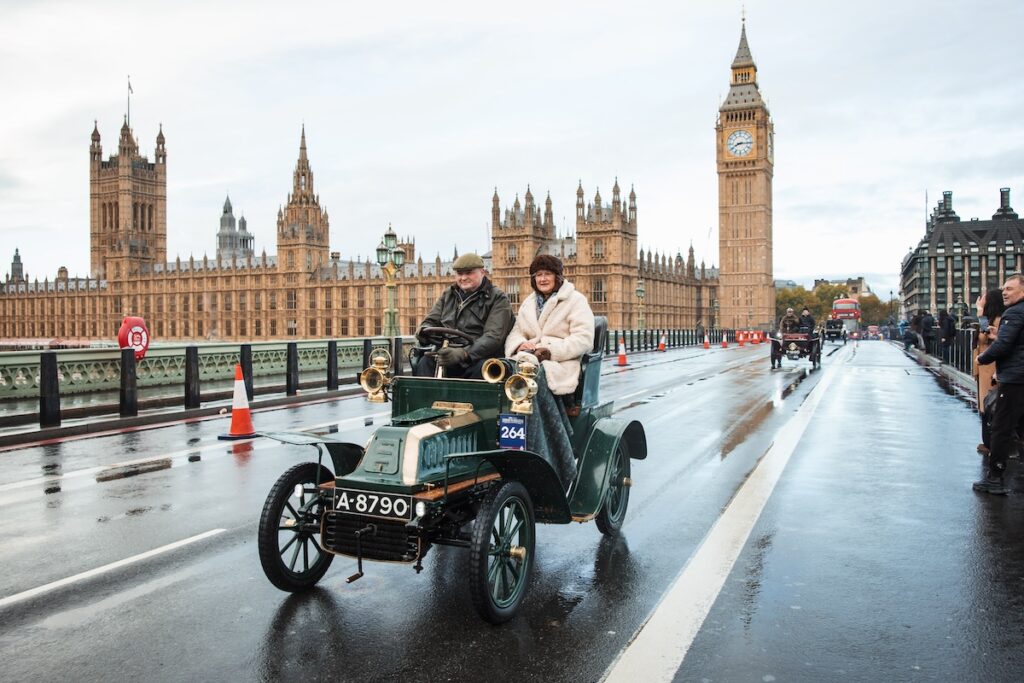
As ever, the vehicles set off in age order, with the earliest starting first in OWL’s wheel tracks, allowing those original pioneers the most time to reach Brighton. After crossing the Thames, the 60-mile route traditionally divides in two to ease traffic flow in south London, and it then merges again on the A236 north of Croydon, reuniting the cavalcade as it heads towards the South Downs in Surrey and West Sussex.
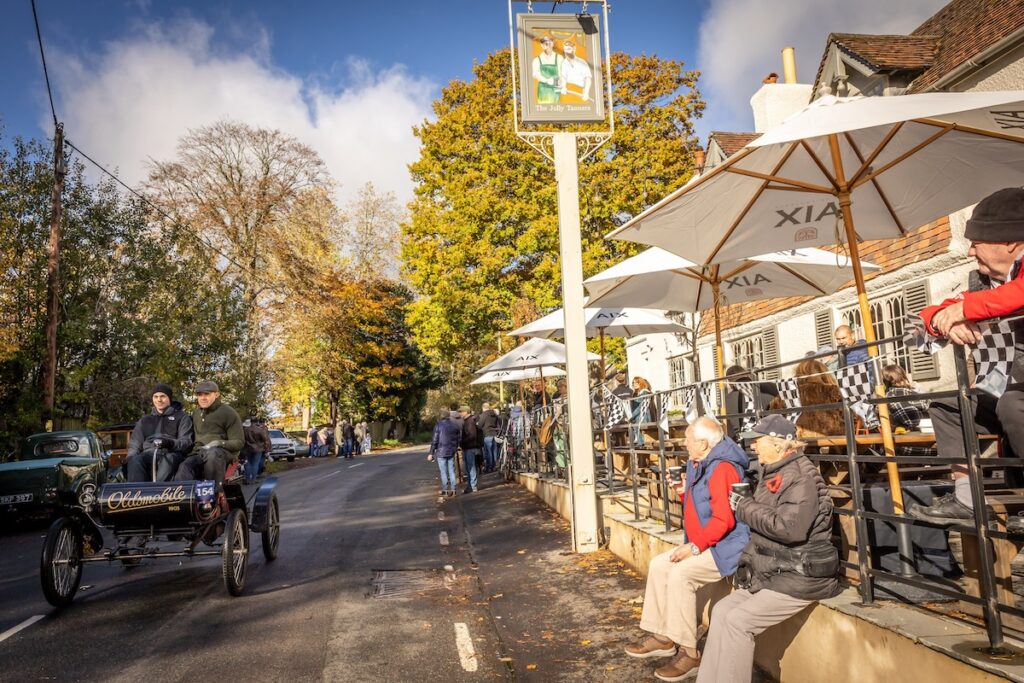
Next year, it will be 100 years since Daimler-Motoren-Gesellschaft and Benz & Cie merged to form Daimler-Benz AG, creating the Mercedes-Benz brand. Anticipating this centenary, Mercedes-Benz Heritage entered a 1901 Benz Spider and a 1904 Mercedes-Simplex in the 2025 Run. Although the Simplex was unable to start, the Spider successfully completed the course.
The sheer variety of vehicles is what makes the London to Brighton so great to watch or take part in. More than 100 marques were represented, from Adler, Albion and Argyll to Waverley, Winton and Wolseley (De Dion-Bouton had the largest showing, with over 50 entries). Some have conventional steering wheels, others naval-inspired tillers; some are powered by petrol, others by steam – and even a few by early electric batteries.
One of the favourite regular sights is Duncan Pittaway’s Salvesen Steam Car – effectively a steam locomotive for the road, complete with a stoker shovelling coal into its fiery furnace – with actor Rowan Atkinson hitching a ride this year. While the Salvesen operated on eCoal, made from a blend of olives, coffee and molasses, many of the internal-combustion-engined cars this year ran on SUSTAIN e-fuel.
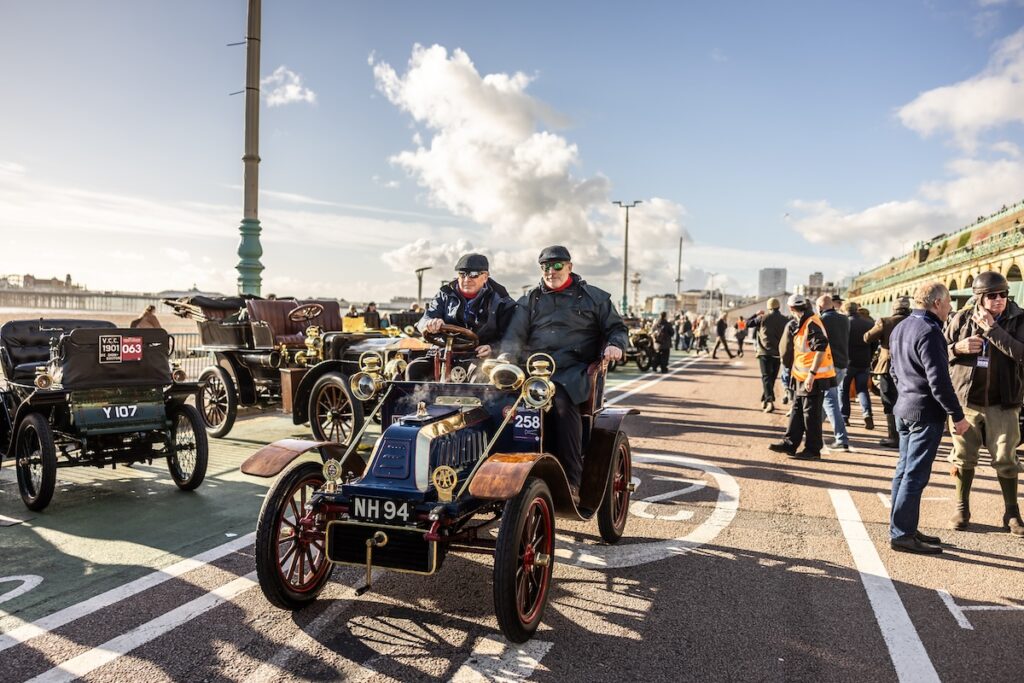
Of the 384 starters, an impressive 340 made it to Brighton before the 4:30pm cut-off time, to collect their coveted finishers’ medals (the Run is emphatically not a race). The event had attracted entrants from across the globe, including cars from Australia, Austria, Belgium, Canada, the Czech Republic, France, Germany, Holland, Hong Kong, Ireland, Italy, Monaco, Sweden and Switzerland, along with a 26-car contingent from the United States.
Full details of the 2025 RM Sotheby’s London to Brighton Veteran Car Run are available here.
